First Postcard from Palestine
Friends, family, and dear colleagues,
This is the beginning of a blog I’ll be writing over the next few months, Postcards from Palestine. Here’s an update on my travels so far.
I arrived in Amman, Jordan this week, the first stop of my sabbatical trip in Spring 2025. I spent two gorgeous nights at the Dead Sea, which is actually a lake bordered on the east by Jordan, and on the west by Israel and the Israeli-occupied West Bank.
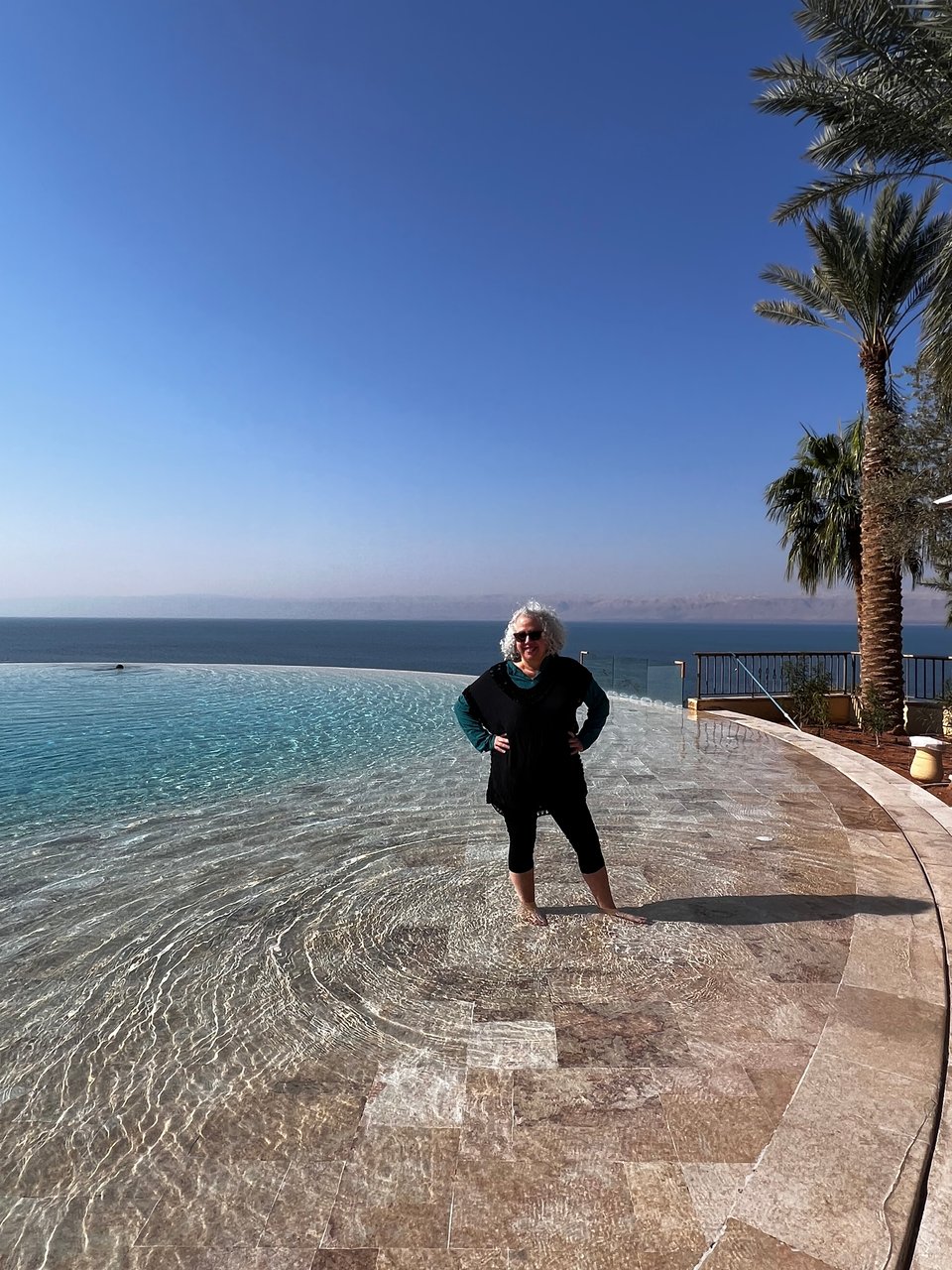
The surface of the Dead Sea is more than 400 meters below sea level, making it the lowest place on earth. Its water is mineral-rich and has nearly 10 times the salt content of the ocean - which is why it has no plant or marine life. It is so dense with salt and minerals that it feels like bath oil (and is great for the skin), and it’s nearly impossible to sink. Floating in the Dead Sea is a magical experience!
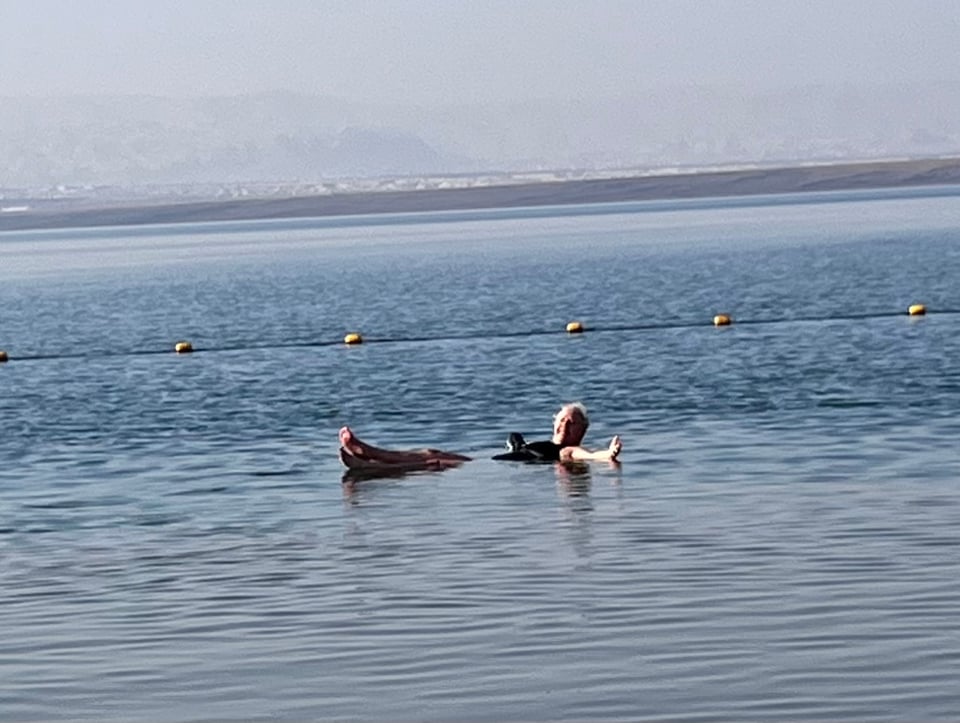
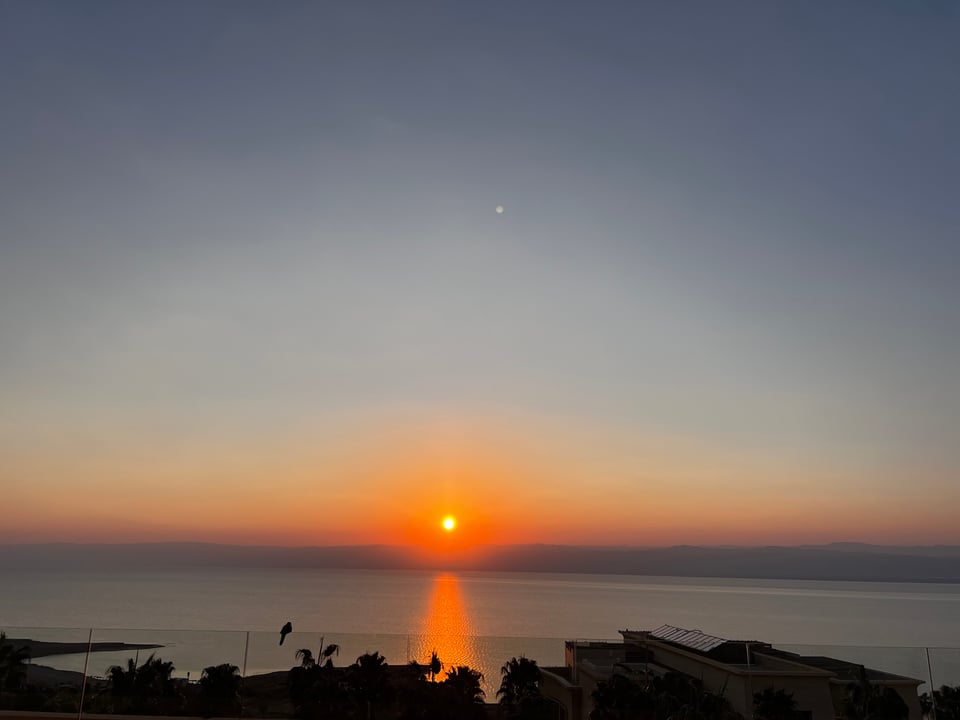
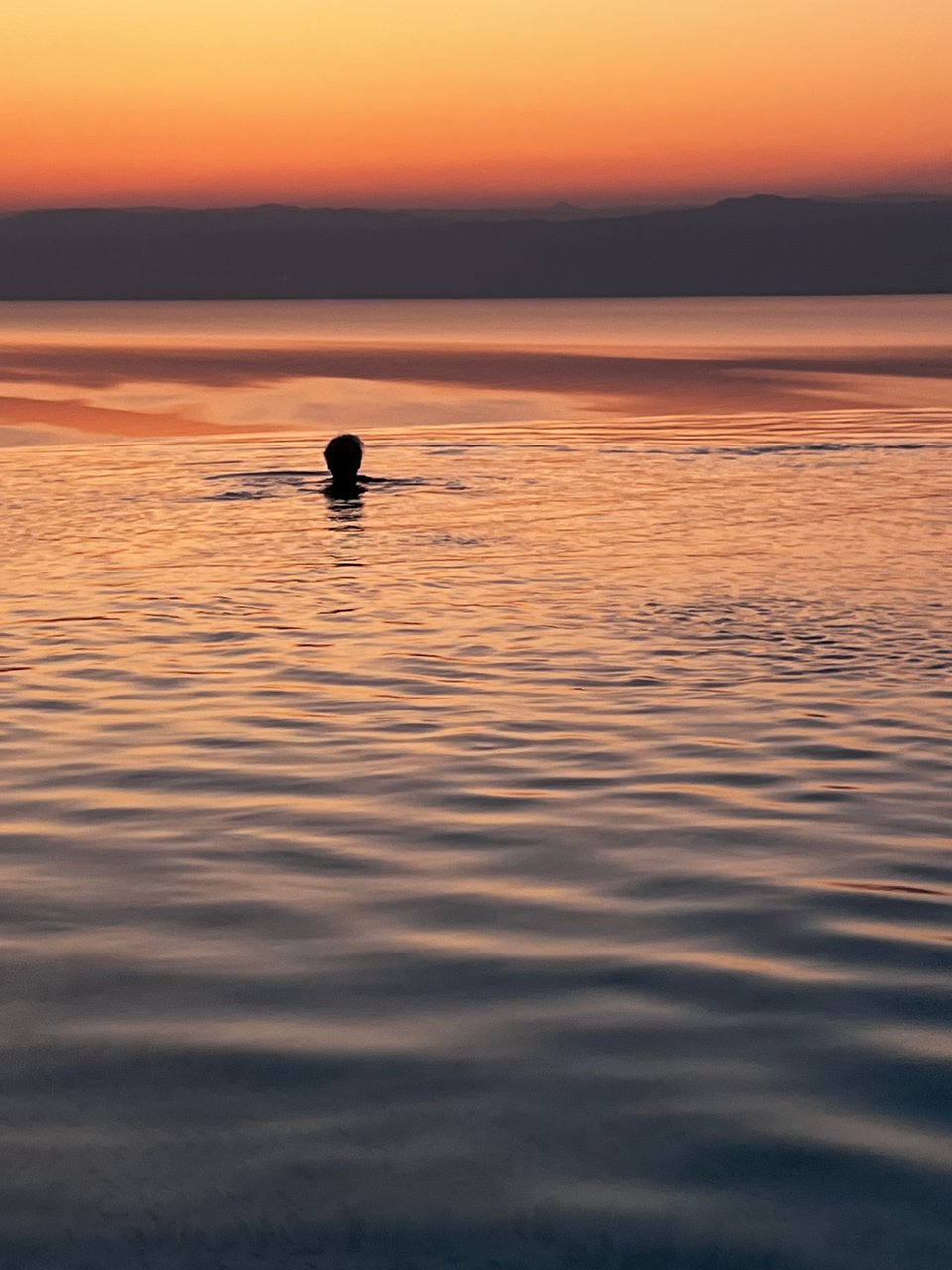
On Friday, January 31, I left Jordan, and crossed the King Hussein/Allenby Bridge (also known as the Al-Karama, or Dignity Bridge), on my way to the city of Ramallah in the West Bank. The bridge spans the Jordan River. It’s one of several land crossings from Jordan into territory controlled by Israel.
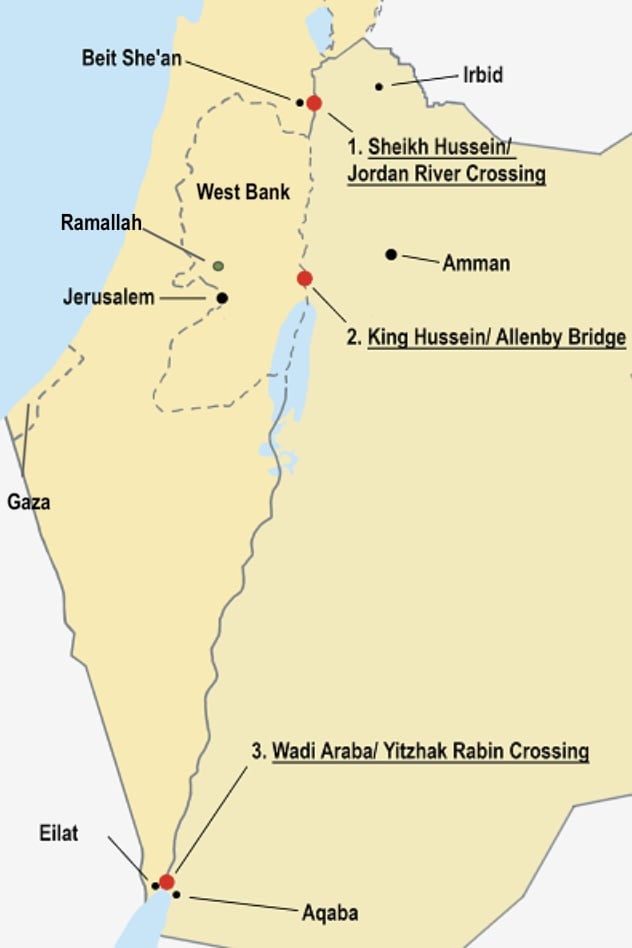
I chose to cross the bridge because I wanted to go to the Dead Sea on the Jordanian side first. But unlike Palestinians living in the West Bank, I had the option to avoid this crossing altogether by flying to Ben Gurion Airport (TLV). West Bank Palestinians are not permitted to use Israel’s airport (or other crossings), so have no choice but to use this bridge.
Under current law, the West Bank is Palestinian territory; in fact, when people talk about a 'two-state solution', the idea was that the West Bank would be the heart of the Palestinian state.
When I arrived by taxi at the King Hussein/Allenby crossing, the driver tried to drop me off at the VIP section, an expensive service primarily for foreign travelers. But the guards wouldn't allow it. (I don’t know why.) So the driver said I should get out of the car, go by myself, show my American passport, and they would let me in (with two heavy suitcases and a backpack). I tried, but they didn't - I still don’t know why. The gates were closed. And the place was packed... not enough room for all the people trying to get to the bridge. No one was pushing, but the crowd was full of anxious people hoping to get through before the crossing closed at noon. (If not, they would have to return another day.) I wasn't sure what to do... as a privileged American, I knew that the system was not designed for me to wait with the crowd. But why shouldn't I? I considered just standing there, for as long as it might be. Why should I skip ahead, and take advantage of such unearned privilege? While I was thinking about all this, a man offered to help. I accepted. He got me into the building where one pays the departure tax (~US$15) and goes through a screening for the crossing. He led me through and recommended a bus just for foreigners. I told him I had been advised to use the VIP service, but he said there was no reason for that - it's a lot of money, and the foreigners' bus goes in the same traffic lane, costs $100 less, and will actually be faster. A Jordanian officer who was nearby agreed that VIP would be slower because there were so many people there - the place was definitely packed. I followed their advice, since people don't usually get tricked into spending less money. And then, sat on the bus for two hours waiting for more passengers. Shout out to our kind and charming driver Nayef, who also gave me Arabic lessons while we waited.
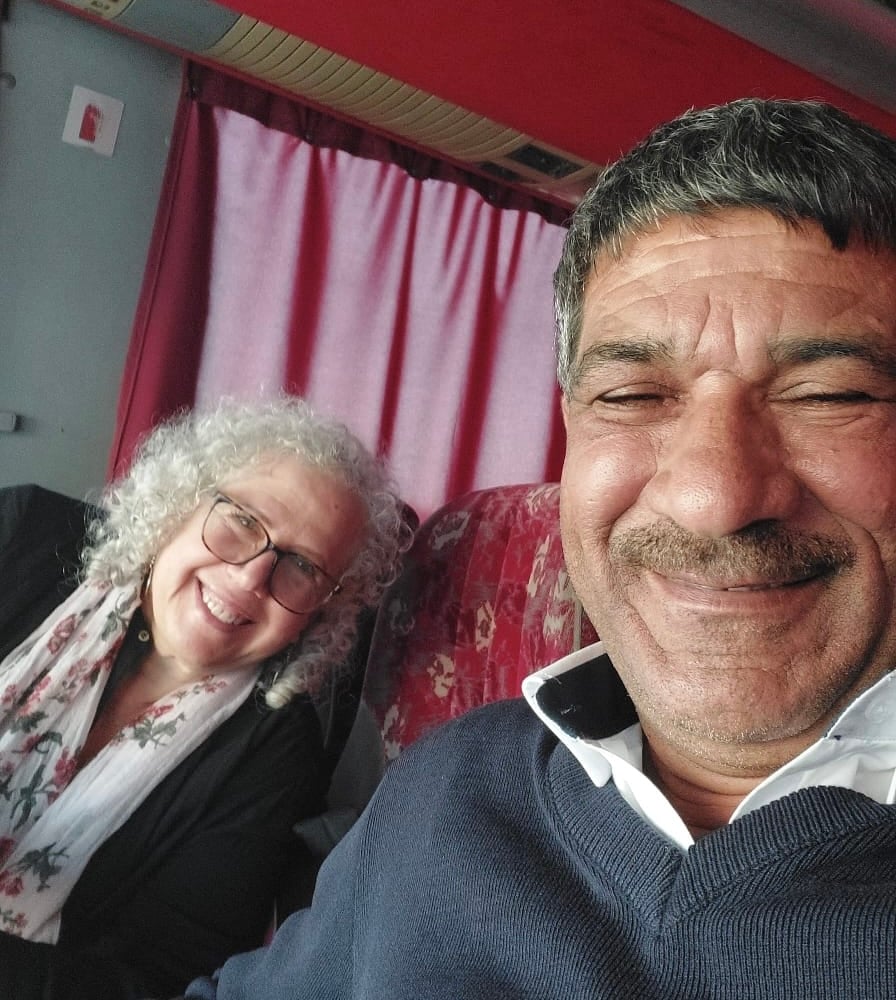
We didn't leave until just after noon, and I kept thinking we were going to be too late because the bridge closes at noon on Fridays. It's also closed on Saturdays, so anyone who doesn't get through in time on Friday has to wait until Sunday. I'd forgotten about the hour time difference though, so we arrived just before the closing - with hordes of other people.
Because the West Bank is occupied by Israel, Israel controls entry and exit through its borders. So I crossed from Jordan to the West Bank, and had to go through Israeli immigration control. On arrival, I followed instructions when I was told to go in a short and quick line - more special treatment for foreigners. It again felt deeply uncomfortable as Palestinians waited in big crowds for a long time. Most of those people waiting on the Israeli side had also waited a long time outside the gate in Jordan, from very early that day or on previous days.
The Israeli officer at the crossing had a lot of questions for me - where am I going, where am I staying, how long am I staying, what am I doing? Where, when, why? She asked if I have a Jordanian passport? (no) A Palestinian identity card? (no) Do I have relatives here (no). Then she told me to take a seat and wait. I sat for a long 5 minutes, worrying there would be more questions. It was 12:45 (1:45 in Jordan). Someone came out and called my name - and said I was free to go.
Palestinian taxis require permission from Israeli authorities to come to the crossing, and I had arranged for a driver to meet me. But he wasn’t able to wait that long, so he’d let me know that he would have to leave. A friend contacted a second driver, but he wasn't able to get permission on such short notice. He advised me to find a taxi at the station. I didn't see a taxi stand, but I saw some buses with Arabic writing, so I asked them and they told me how to get to Ramallah - first a bus to Jericho, then a minivan to Ramallah. The bus ride to Jericho was short - and then another immigration screening and baggage check (by the Palestinian Authority). From there, into the minivan, and a long and wind-y ride to Ramallah.
I was surprised - and relieved - that we did not pass any checkpoints throughout the trip. (Checkpoints are permanent and temporary barriers erected by the Israeli army within the West Bank, which require security screening of anyone who passes through. I’ll write more about checkpoints another time.) As we drove through the West Bank, we did see a lot of territory-marking: Stars of David spray-painted on walls (I wasn’t able to get my camera ready fast enough for that) and Israeli flags:
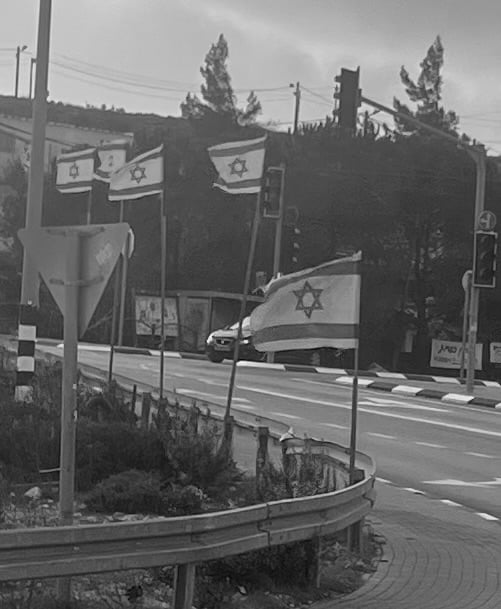
The minivan finally dropped us off at a taxi stand in Ramallah, and this was the gorgeous scene:
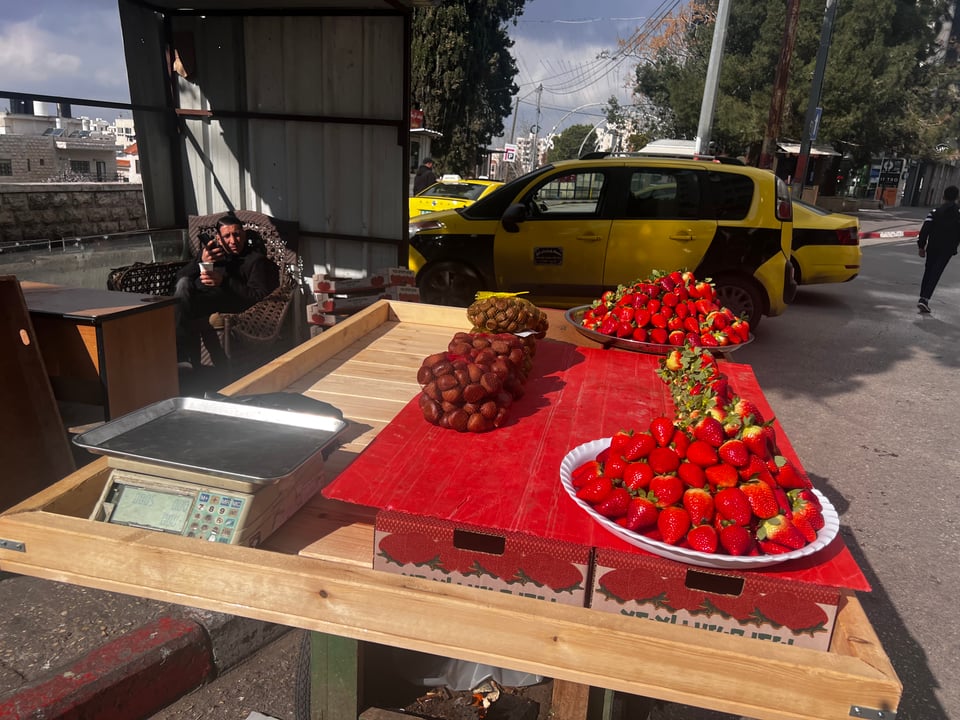
From there, I took a cab to the Lavender Boutique Hotel, just a mile or so away. (Thank you Diana for the recommendation!) The owner and staff are exceptionally gracious. More about the hotel next time.
If there were no border, the trip from my hotel at the Dead Sea in Jordan to my hotel in Ramallah in the West Bank would be a drive of less than an hour and a half. Instead, the journey took me more than 6 hours - and that was in the highly expedited and ultra-privileged process for foreigners.
It's worth noting a few things here. Palestinians in the West Bank are required to cross a national border to get to an airport, and this crossing is a difficult one. It is open only from 8 am to 7:30 pm Sunday through Thursday, with occasional unexpected closures at other times. On Fridays, the crossing is open only half a day, and it’s closed on Saturdays for the Sabbath. By contrast, Ben Gurion Airport does not close on either Friday or Saturday, so that Israelis and international travelers are able to get into and out of Israel on any day. It’s also a much faster way to travel. It’s worth noting too that a Palestinian driver needs permission from Israel to pick someone up from the bridge, even though it is located in Palestinian territory. And these plans must be made in advance. Imagine needing to get permission from the government, in advance, to pick someone up at the airport!
But I’ve arrived safely, and am happy to be here. I plan to stay in Ramallah for awhile. I’m going to take classes at Birzeit University. I hope to find an Arabic tutor, and to do some linguistics research.
That’s it for now! More to come soon. Please feel free to email or text anytime. I’d be glad to hear from you.
Salaam,
Nancy